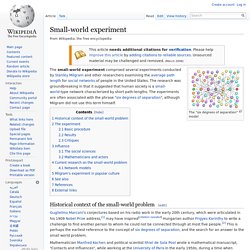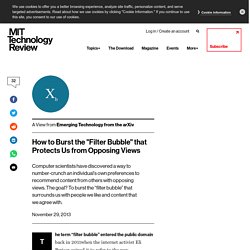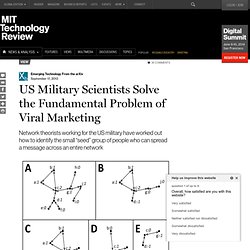

Small world experiment. The "six degrees of separation" model The small-world experiment comprised several experiments conducted by Stanley Milgram and other researchers examining the average path length for social networks of people in the United States.

The research was groundbreaking in that it suggested that human society is a small-world-type network characterized by short path-lengths. The experiments are often associated with the phrase "six degrees of separation", although Milgram did not use this term himself. Historical context of the small-world problem[edit]
Complex Networks Abound. Global brain. The Global Brain Institute. The GBI uses scientific methods to better understand the global evolution towards ever-stronger connectivity between people, software and machines.

By developing concrete models of this development, we can anticipate both its promises and its perils. That would help us to steer a course towards the best possible outcome for humanity. Objectives (for more details, check our strategic objectives and activities) Assumptions We see people, machines and software systems as agents that communicate via a complex network of communication links.
Data:urls:index [Pajek Wiki]
Network Systems People, Places, Publications. Network Society - research project, collaboration, digital culture, communication, social media, new technology, ubiquitous computing. New research to uncover nuances of networks. Feb. 20, 2013 9:01 a.m.

When a species disappears from a region, the rest of the ecosystem may flourish or collapse, depending on the role that species played. When a storm rolls across the coast, the power grid might reconfigure itself quickly or leave cities dark for days. A snowstorm might mean business as usual in a hardy city and a severe food shortage in another, depending on the distribution strategies of residents. Each of these systems is a kind of network, with thousands of members and relationships linking them. Understanding how networks behave is key to ensuring their functioning. With current network theory, scientists can predict a few simple trends, such as which web pages are likely to get more hits over time.
A new four-year, $2.9 million grant from the Defense Advanced Research Projects Agency is supporting SFI research that will, the researchers hope, propel their understanding of networks to the next level. They have already made progress.
Data Visualization Software. Start [Pajek Wiki] Network Visualization. Join the journey to map the Internet, download the DIMES agent today. Internet topology. 1+1=1 : la formule des réseaux. On parle de réseau lorsque des éléments interagissent entre eux au sein d’un groupe.

Ils sont étudiés aussi bien par les sciences humaines et sociales, les sciences du vivant et de la terre, que les sciences et techniques de l'information et de la communication. De façon étonnante, tous ces réseaux apparemment distincts ont certains points communs. Ce texte cherche à proposer une synthèse accessible à des non-spécialistes de ce qui est commun (mais aussi différent) dans les différents types de réseaux. Il fait donc appel autant que possible à un vocabulaire usuel. Les termes techniques exacts sont cependant indiqués en note afin de pouvoir faire référence aux différents travaux dans ce domaine qui s’est largement développé depuis une vingtaine d’année [1]. La triade « constituants, règles, réseau » Souvent nous tentons d’aborder un réseau social, technique ou autre par le réductionnisme : en étudiant le comportement de ses constituants. Les constituants plus les règles donnent le réseau. How to Burst the "Filter Bubble" that Protects Us from Opposing Views.
The term “filter bubble” entered the public domain back in 2011when the internet activist Eli Pariser coined it to refer to the way recommendation engines shield people from certain aspects of the real world.

Pariser used the example of two people who googled the term “BP”. One received links to investment news about BP while the other received links to the Deepwater Horizon oil spill, presumably as a result of some recommendation algorithm. Math algorithm tracks crime, rumours, epidemics to source. (Phys.org) -- A team of EPFL scientists has developed an algorithm that can identify the source of an epidemic or information circulating within a network, a method that could also be used to help with criminal investigations.

Investigators are well aware of how difficult it is to trace an unlawful act to its source. The job was arguably easier with old, Mafia-style criminal organizations, as their hierarchical structures more or less resembled predictable family trees. In the Internet age, however, the networks used by organized criminals have changed. Innumerable nodes and connections escalate the complexity of these networks, making it ever more difficult to root out the guilty party.
US Military Scientists Solve the Fundamental Problem of Viral Marketing. Viral messages begin life by infecting a few individuals and then start to spread across a network.

The most infectious end up contaminating more or less everybody. Just how and why this happens is the subject of much study and debate. Network scientists know that key factors are the rate at which people become infected, the “connectedness” of the network and how the seed group of individuals, who first become infected, are linked to the rest. Neural Network. Systemica. Networksociety. Poolalgosynergizingv1.png (7016x4961)